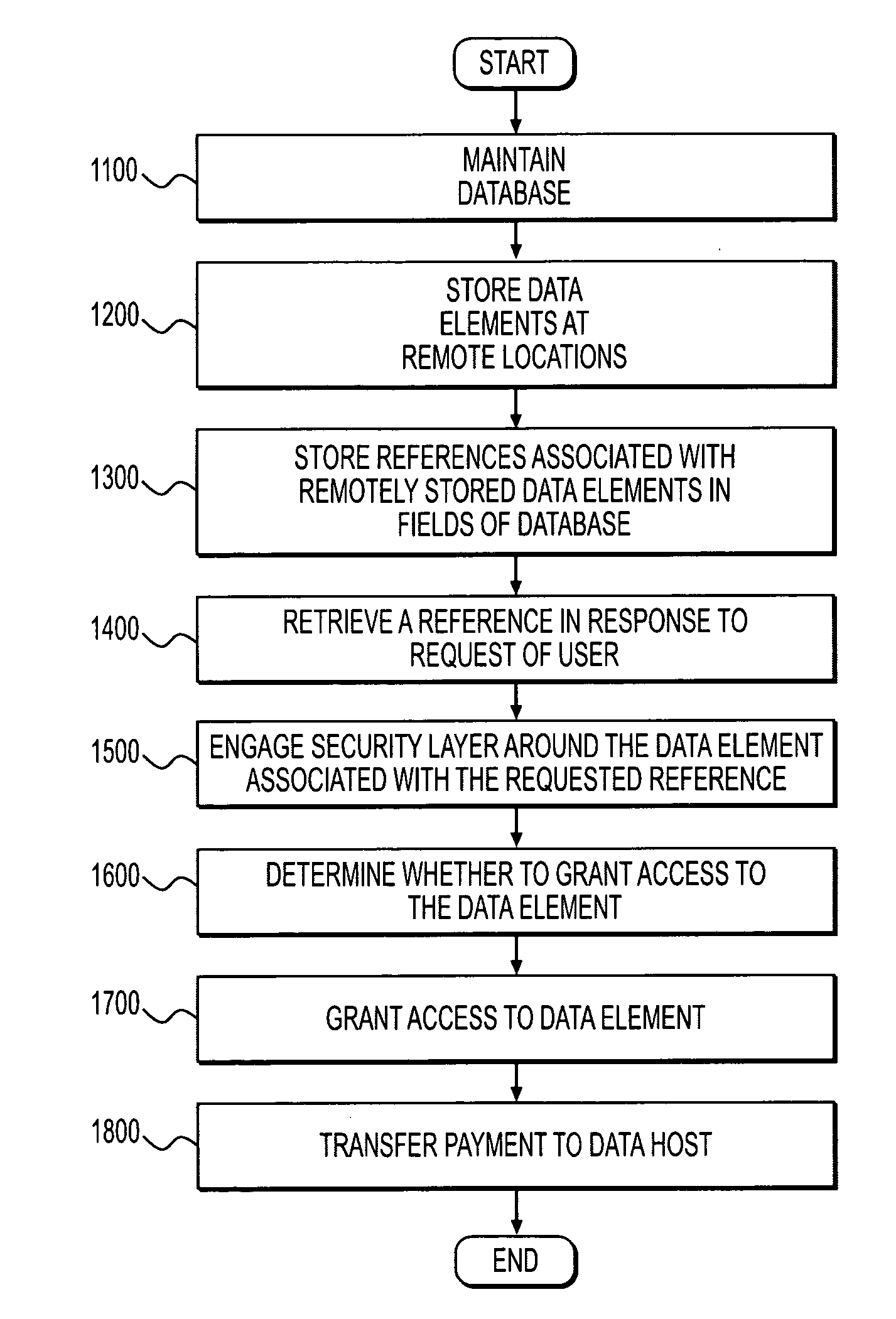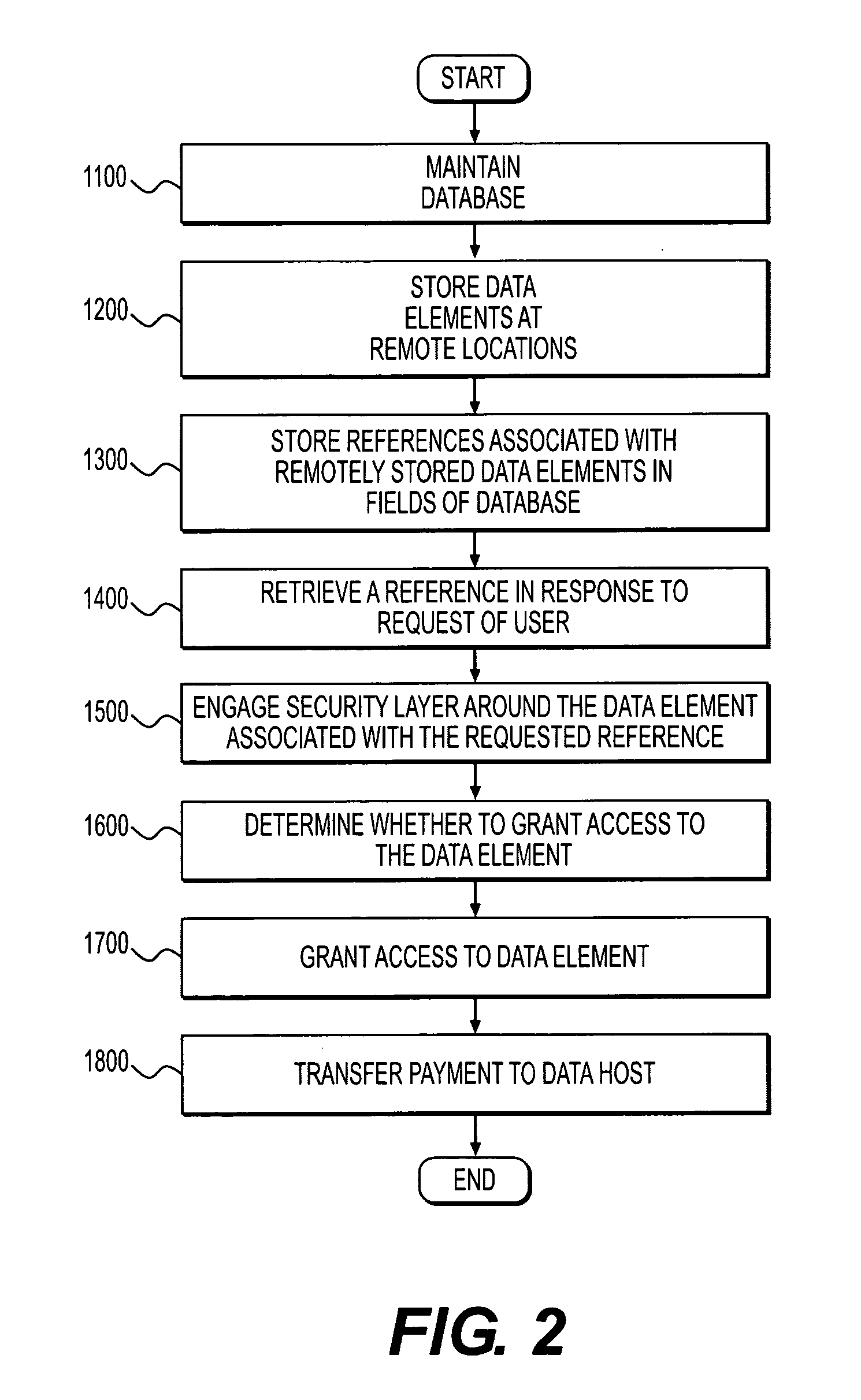Method and system for database encryption
a database and database encryption technology, applied in the field of database encryption methods and systems, can solve the problems of large database encryptions that require a large amount of continuous maintenance to load balance, limit the address space to 4,294,967,296, and insufficient unique addresses
- Summary
- Abstract
- Description
- Claims
- Application Information
AI Technical Summary
Benefits of technology
Problems solved by technology
Method used
Image
Examples
Embodiment Construction
[0018]The present application is directed to a database encryption system, wherein each data element in a database may be assigned to a unique, 128-bit (or greater) IP address (e.g., according to IPv6) residing on a host at a remote location. In some embodiments, the fields of the database may only contain the IP addresses of the location where the actual data is stored. In some embodiments, these IP addresses never need to change (although they easily could be changed).
[0019]As shown in FIG. 1, certain embodiments of the present disclosure are directed to a database encryption system 10. System 10 may include a memory 12 having program code stored therein and a processor 14 operatively connected to memory 12 for carrying out instructions in accordance with the stored program code. System 10 may be implemented over a network 13, such as the Internet, by storing instructions serially or in parallel in memory systems across multiple, remote computing devices connected by a network, wh...
PUM
 Login to View More
Login to View More Abstract
Description
Claims
Application Information
 Login to View More
Login to View More - R&D
- Intellectual Property
- Life Sciences
- Materials
- Tech Scout
- Unparalleled Data Quality
- Higher Quality Content
- 60% Fewer Hallucinations
Browse by: Latest US Patents, China's latest patents, Technical Efficacy Thesaurus, Application Domain, Technology Topic, Popular Technical Reports.
© 2025 PatSnap. All rights reserved.Legal|Privacy policy|Modern Slavery Act Transparency Statement|Sitemap|About US| Contact US: help@patsnap.com



